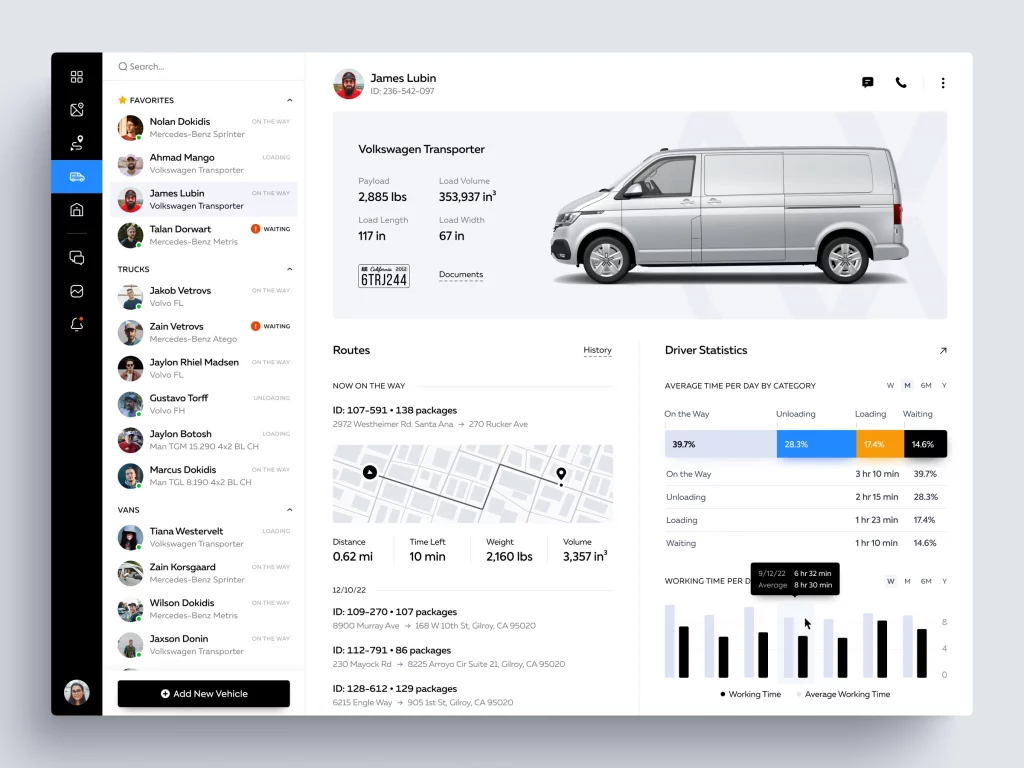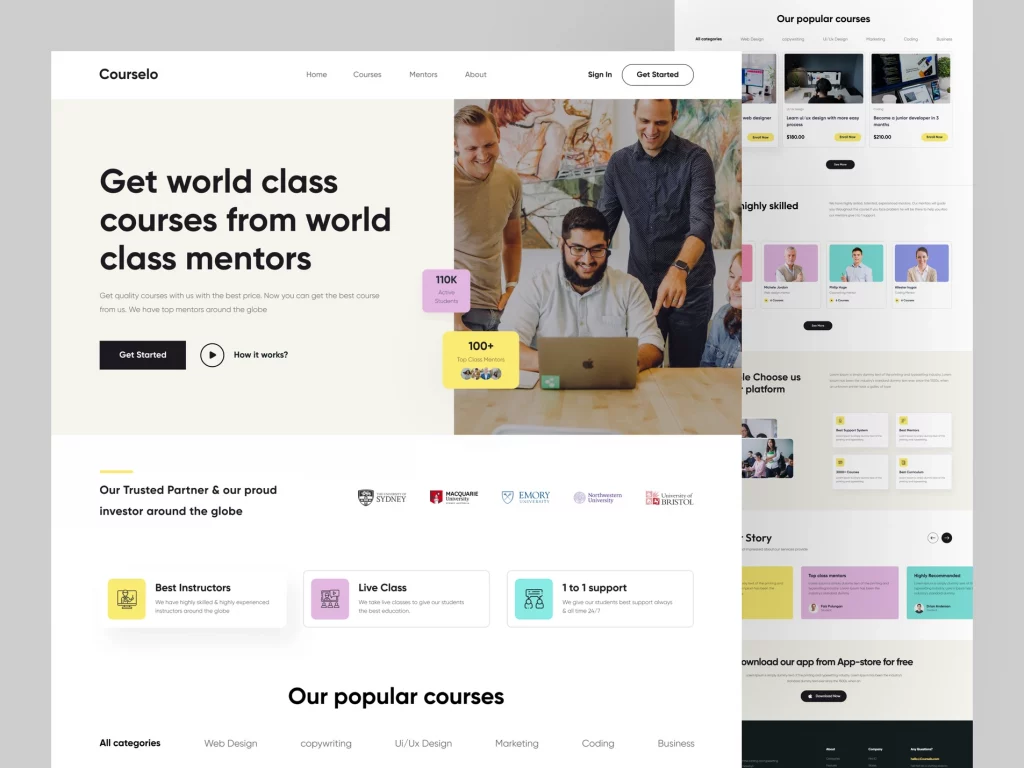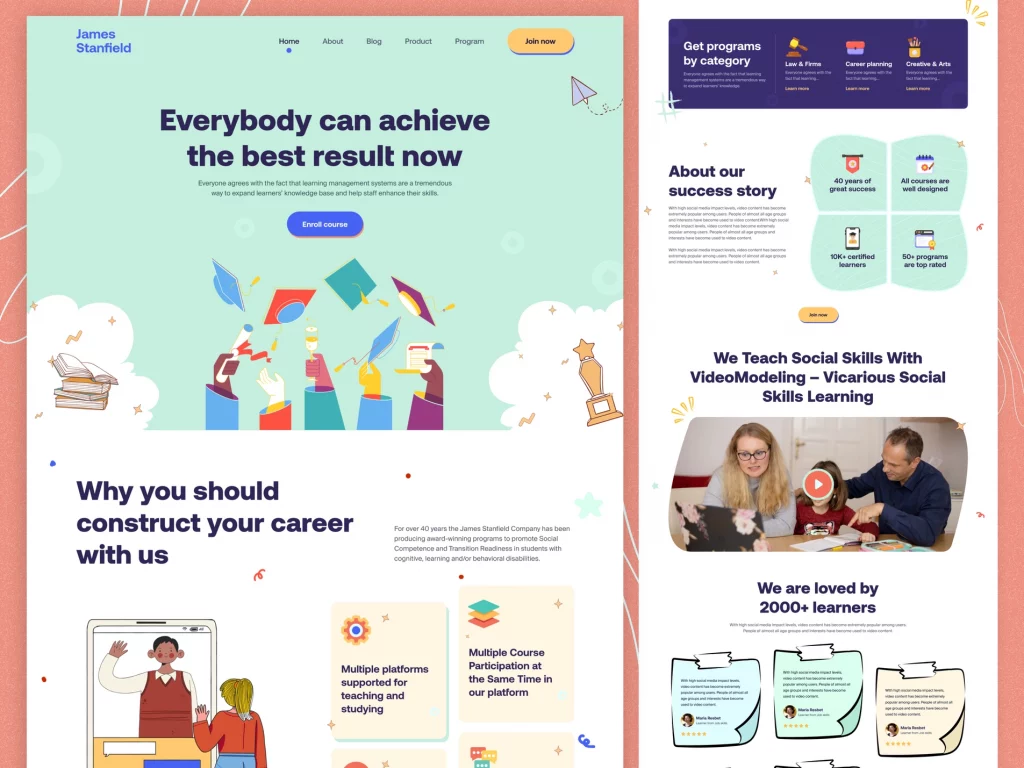Are you a web developer tired of grappling with outdated frameworks that slow down your projects and leave you feeling frustrated? There are dozens of newer options but which one should you choose for the current project?
Contents:
In this article, we will dive into the age-old debate of Ruby on Rails vs. Django to help you determine which is the superior framework for your goals. Whether you’re seeking seamless integration, robust features, or a user-friendly platform, we will provide you with the essential insights to make an informed decision. You will be able to identify the main distinctions between the two frameworks and select the one that works best for you.
What is Ruby on Rails Framework?
Ruby on Rails is a server-side, open-source web app framework written under the MIT License. Rails, as a model-view-controller framework, provides fantastic default structures for databases, web services, and pages. It is a time-saving method of writing code for developers.
This framework is based on two fundamental principles: DRY (Don’t Repeat Yourself) and Convention Over Configuration. The former eliminates the need to repeat the same coding task, whereas the latter means that the environment you work in, such as systems, libraries, languages, and so on, allows for many logical situations by default. That means you can adapt to them rather than making your own rules each time, making the entire programming process much easier.
What is Ruby on Rails used for? Usually, for building dynamic and database-driven websites and web applications. It is known for its ability to simplify complex tasks, such as managing databases, routing, and rendering views, allowing developers to focus on creating innovative features and functionality.
Additionally, Rails is used in conjunction with popular front-end frameworks and libraries such as Angular, React, and Vue. And, unlike Ruby on Rails alternatives, it is highly adaptable to changes, allowing developers to experiment with the functionality of created products.
Several well-known companies and successful startups have used the framework for their web applications. For instance, Airbnb, the popular online marketplace for lodging and vacation rentals was built using Ruby on Rails.
Advantages of Ruby on Rails
In terms of Ruby on Rails vs Django comparison, the first one has several advantages.
- Model-View-Controller (MVC) architecture-based
A web application in this architecture has three interconnected layers. The model contains code that operates on application data. It centralizes the application’s business logic as well as the data manipulation rules. Users can access data in HTML, PDF, XML, RSS, and other formats. The controller communicates with models and views. It receives a request from the browser, processes it with models, and instructs the viewer on how to display the result to the user correctly.
- Easy to manage changes
The Ruby on Rails framework makes it simple to modify existing code or add new features to the site. Following the site launch, making future changes to your site (for example, making any significant changes to the data model) is simple and quick.
Because of its stability and predictability, this framework is best suited for long-term projects.
- Performance
If we compare Django vs Ruby on Rails, the latter may slow down applications that require a lot of computation or data handling. If this occurs frequently in your application, have a fresh pair of eyes look at code optimization — this will greatly improve performance outcomes.
There can be parts of the codebase that are performing slowly, and the tooling and shared experiences that come with the Rails community can help a team address performance issues.
- Cost-effective
The Ruby on Rails framework is completely free and runs on Linux, making it an open-source framework. It’s also simple to work with from a developer’s standpoint. There are numerous gems (plugins) available, which can save a lot of developers time and effort, which is a great advantage of Ruby.
It is simple to create and maintain a website without spending additional money to ensure greater quality, performance, or scalability.
- A sizable community
It ranks among the most used languages on the social coding platform GitHub. Many developers in the community are always working to make their code better and helping others with their projects.
If you need specific functionality, someone else has already built it or is willing to assist you in resolving any problems. To work with the code, you’ll still need a strong team.
Disadvantages of Ruby on Rails
The framework also has some downsides you should consider.
- Time to completion
One of the main concerns is the slow runtime speed. When comparing Ruby on Rails vs Django, the latter is slightly faster than RoR.
Twitter, for example, struggled to improve RoR’s performance, which had deteriorated after the social network gained popularity. Twitter did not completely abandon RoR, but it did have to replace certain internal communication components and server daemons with Scala solutions.
- Boot rate
Boot speed helps developers save time. However, starting can take a long time depending on the number of gem dependencies and files. This is an area where RoR could improve.
- Lack of versatility
Many defaults and predefined objects leave no room for experimentation. So, when you struggle with Django vs Ruby on Rails, consider their basic elements and whether they are standard or unique.
- The cost of a blunder
The cost of a mistake in Ruby on Rails development is inextricably linked to performance time. The framework will be your best friend if you pay attention to all the small details during the process.
If you make a mistake in the early stages, it can significantly slow down your entire application. The reason is the problems with the connection between different parts of your software, resulting in unintended consequences.
- Limited scalability
There are several key factors. These include its relatively slower performance compared to other frameworks, especially when it comes to handling large amounts of traffic or data. As a Ruby on Rails-based application grows in size and complexity, it may experience difficulty scaling effectively to handle a higher volume of users or activities. This can result in slower response times and reduced ability to serve large numbers of simultaneous users.
Additionally, the Ruby on Rails architecture may not be optimal for highly scalable applications that require exceptional performance in high-demand environments. Therefore, you should carefully consider scalability when choosing Ruby on Rails, as you might have to implement additional optimization and scalability strategies to address these limitations.
Now that we’ve discussed RoR, time to dwell on the next question: what is Django Python?
What is Django Framework?
Django is a Python-based web framework that was first introduced in 2005 and is frequently used for Python app development. The fact that it is an all-purpose, open-source, and cost-free framework is what makes it so well-liked in the web development community. That is why developers have high praise for Django’s features.
Django aims to speed up the process of developing web apps by streamlining the entire web development cycle. It provides tools for managing static files in web apps, data validation, caching, logging, pagination, authentication, and more. The language has been around for a little over fifteen years.
Django adheres to the DRY principle used in web and software development, just like fellow industry leader Ruby on Rails. DRY, which stands for “Don’t Repeat Yourself,” is a principle intended to prevent the formulaic repetition typical when creating structures from code.
Examples of the Django framework in action in the real world include data management for streaming services such as Netflix and Spotify, PayPal and JP Morgan in finance, and Google and Mozilla in technology. Instagram, a Facebook-owned social media platform, is one of the most prominent real-world applications of Python.
Advantages of Django
- Efficiency and scalability
Django vs Ruby on Rails showdown represents one of the main reasons Django is so well-liked in tech startups. It allows you to build and scale projects up extremely quickly.
- Documentation
Depending on how you want to approach the framework, the creators have divided the documentation into different sections, all incredibly helpful. Whether you need assistance with making your code run quicker, detailed information on the security features of the framework, or instructions on how to create forms in Django.
- Security
Any backend framework handling accounts and data must be able to safeguard its users’ information. Django has a system for user authentication and incorporates HTTPS, Clickjacking, XSS, CSRF, and SQL injection protection. The best thing about it is that you won’t have to spend any time fiddling with Django’s security features as they are already configured.
- Versatility
This framework’s scalability advantages extend to what you are building as well as to the outside world. Django can handle anything from a content management system to an entire social network. It is adaptable enough to handle complex data analysis or machine learning tasks that you ask it to perform.
- Community assistance
With over sixteen years of existence (half the life of the Python language itself) and such a diverse set of applications, it should come as no surprise that the Django community is thriving.
Disadvantages of Django
When comparing Ruby on Rails vs Django, we can highlight the following cons:
- Not a fit for simple projects
Because Django is a high-level framework, it lends itself better to complex features. So if you are trying to get a quick and simple project done, it might not be the ideal framework to use.
- Slow websites
Despite the speed with which you can build things with the Django framework, your website may occasionally run slowly. It’s important to note that this isn’t due to the Python language or Django itself, but rather to the number of resources you’re accessing with the framework. The more databases and other resources you send requests to, the slower the performance becomes.
- Requires a vast knowledge of the language
A problem with this is that Django can be too large at times, requiring you to know the overall structure before you can begin building it. However, because there is guidance and documentation to follow, the wide range of support resources and community can make this easier.
- Lack of conventions
A coding convention is a set of guiding principles to follow when using a web framework—sort of like a rulebook. Django does not, which can turn off some programmers and lead to slower progress at times.
Django vs. Ruby on Rails: Key Differences
Before choosing the web application framework that works best for your project, let’s compare Ruby on Rails to Django in detail.
Language
Django is a Python-based web framework, whereas Ruby on Rails is based on the Ruby programming language. While Ruby has a very agile interface, Python language is easier to learn because of its simple syntax.
On the other hand, Ruby was designed with the goal of “enjoying” writing the language. Though the applications created with either of them will look and function nearly identically, the main difference can be found beneath the surface.
Architecture
If we compare Django vs Ruby on Rails, there is one thing they have in common — MVC (Model-View-Controller). However, in Django, it is referred to as MVT (Model-View-Template). MVC and MVT are similar in most ways and differ only slightly.
The Model in Django represents the database that describes the data structure, and the View is the Regular Expression-based URL Dispatcher that controls what the users should see. Last but not least, Template denotes a web templating system that works in tandem with the Django Template Language (DLT). Django handles the controller part of this.
In RoR, the Model represents database data such as comments, pictures, posts, and so on. ActiveRecord takes care of everything. In this case, the View wraps the data in the HTML template and sends it to the Controller, which is then handled by ActiveView. The ActionController is now in charge of connecting Model and View, handling requests, and sending responses to the web browser.
Online servers
The primary web servers for the Django web framework are Apache, NGINX using WSGI, Gunicorn, and Cherokee. Django uses SQLite, PostgreSQL, MySQL, and Oracle as its database servers.
NGINX, Apache (running the Phusion Passenger Module), and WEBrick are the three main servers used by the Ruby on Rails web framework. PostgreSQL and MySQL are two database servers for Rails.
License
Ruby on Rails is licensed under the BSD License, which is a low-restriction type of license for open-source software that does not impose redistribution requirements. However, Django operates under the MIT license, which grants permissions and indemnifies developers for future use.
User interface
When it comes to the user interface, there aren’t many differences in terms of Django vs Ruby on Rails comparison. They do have some differences, but they are more of a matter of taste than of type. Both have undergone extensive adaptation to meet all free market demands for web development in the twenty-first century.
When it comes to web frameworks, the likelihood is that if you can’t do it with Django or Ruby on Rails, you probably can’t do it at all. Therefore, which one you should choose when it comes to their respective interfaces is more a matter of taste. You should experiment with both to get a sense of them before making a choice.
Application in web development
The principles serve as the glue that binds the entire process of developing an app. Two guiding principles of the Django web framework are noteworthy: DRY (which we have already discussed) and “Explicit is better than Implicit.” This idea enables programmers to create applications that are simple to use and are supported by a large community of users.
Additionally, Ruby on Rails is not short on design principles. Additionally, it makes use of DRY and Convention over Configuration, which promotes the idea that to be productive, you should adhere to conventions rather than make your configurations. This increases effectiveness and speed.
What is Ruby on Rails used for? In short, MVPs, eCommerce, web projects, and metaprogramming are the main uses of RoR. The Django framework is designed for creating websites with lots of data as well as ML, Data Science, and AI projects.
Speed and effectiveness
Ruby on Rails performs 0.7% faster when compared to Django performance-wise. The reason for this is that Rails has the benefit of a vast collection of incredible libraries and plugins to increase the speed and ultimately the performance of this framework. However, Django is a fantastic option for a web framework and equally supports quick development cycles.
Stability
Stability and creativity are two complementary factors required for web development. We could pick the one who can handle both well as the winner. Ruby on Rails can balance both because it encourages code reuse to reduce dependencies. Additionally, it employs the Convention over Configuration methodology, which relieves the coders of any additional work.
On the other hand, Python adopts a more traditional strategy by using any tested method to address the issues at hand, offering stability.
Ruby on Rails Or Django: Which Framework Should You Choose & When?
If we compare Ruby on Rails to Django — which is better? Overall, the top web frameworks in their respective categories are in fierce competition. However, there are some instances where one prevails over the other.
If your project necessitates the following, use Django:
- Managing a large database;
- A sizable development team;
- AI and machine learning features in modern web apps;
- Extremely secure websites.
If your project needs the following, use Ruby on Rails:
- Accelerated MVP creation;
- E-commerce web apps that are safe and secure;
- Scalable and live-updatable websites;
- Prototypes are created quickly.
Choosing the best web development framework is a critical task that can have a significant impact on the entire project development process. As you can see, the final answer to the “Ruby on Rails vs. Django” question is largely determined by the project’s specifics, business goals, and expectations. Considering the factors listed above will undoubtedly assist you in determining the best one in terms of functionality and efficiency.
Still not sure which framework to use for your project? We’re here to help. Shakuro can assist you in deciding between Ruby and Django and step in for any web development project you may have, thanks to our expert team. Contact us for more information.
* * *
This article was originally published in March 2023 and was updated in July 2024 to make it more relevant and comprehensive.



